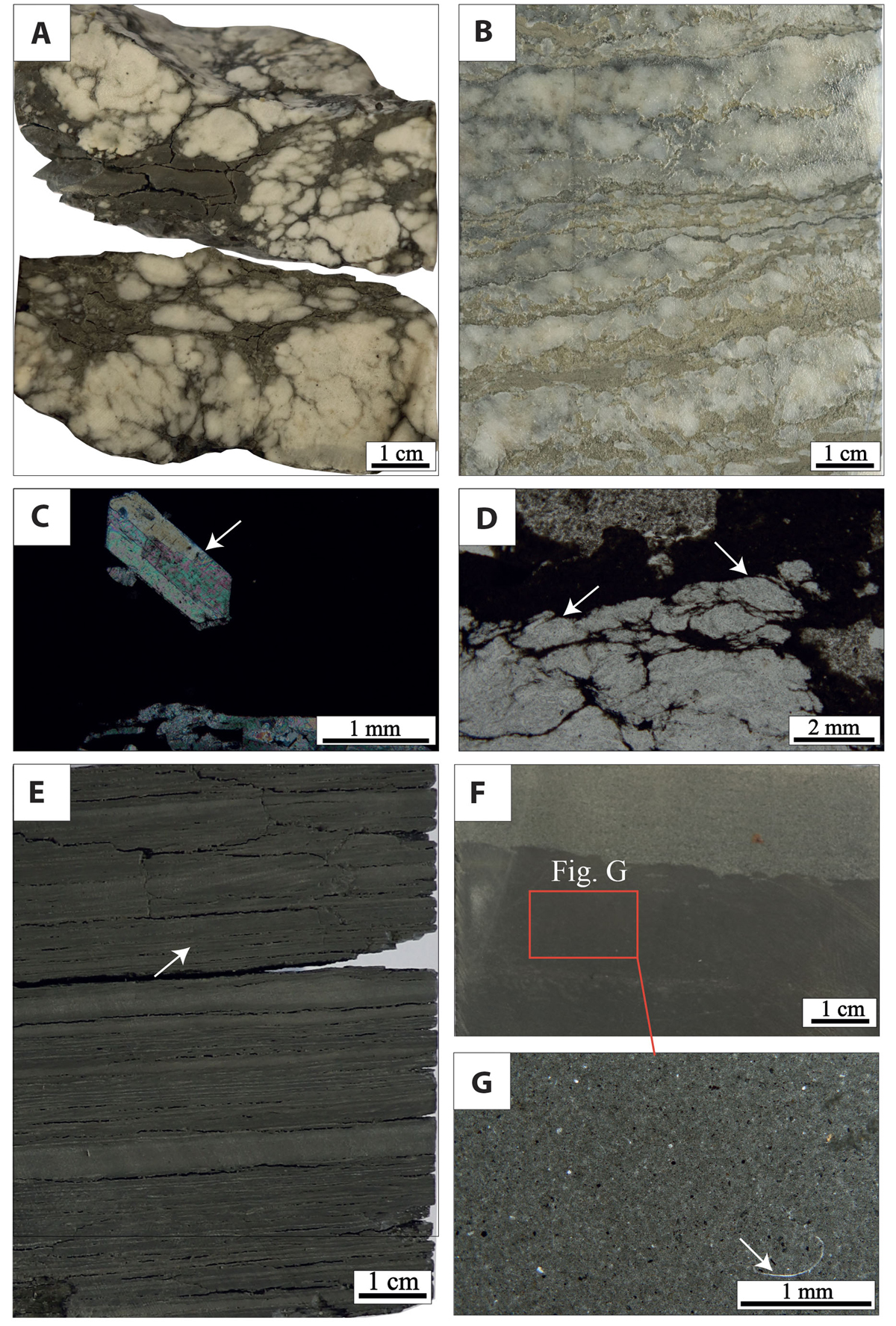Fig. 5

Download original image
Anhydritic marls and anhydrite (F1), finely laminated limestones and papyraceous marlstones (F2), dark grey marlstones with scarce fauna (F3) facies. (A) and (B) Hand sample images showing the whitish anhydrite nodules set in the marlstone matrix (A) and the banded anhydrite resulting from the coalescence of the anhydrite nodules (B). (C) Thin section of the facies F1 showing the needle microcrystalline structure of the anhydrite nodules (white arrow) embedded in a marlstone background (XPL image). (D) Thin section of the banded anhydrite (F1 facies) displaying the relicts of prismatic to lenticular crystals (white arrows) within the anhydrite nodules (PPL). (E) Core photograph showing the alternation of white and dark millimetre-thick laminae within the papyraceous marlstones (F2 facies), the white arrow indicates accumulation of horizontally settled plant leaves. (F) Hand sample showing a dark grey marlstone (Facies F3) interval that lies below a grey sandstone interval (further detailed images on sandstones in Fig. 6). (G) Microphotograph showing a close-up view of the box in (F) and displaying the microscopic characteristics of the dark grey marlstones (facies F3), the arrow indicates an ostracod shell.
Current usage metrics show cumulative count of Article Views (full-text article views including HTML views, PDF and ePub downloads, according to the available data) and Abstracts Views on Vision4Press platform.
Data correspond to usage on the plateform after 2015. The current usage metrics is available 48-96 hours after online publication and is updated daily on week days.
Initial download of the metrics may take a while.




